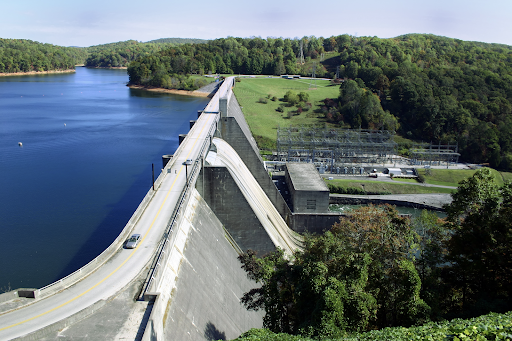The Rufiji delta's streams and mudbanks are home to East Africa's biggest continuous stand of mangroves, encompassing 210 square miles. The only thing on his thoughts was how much longer could this go on?
According to some environmentalists, unbeknownst to Kiyonga and her 12,000 fellow villagers on the delta, the government was about to award contracts to construct one of Africa's most environmentally destructive dams.
The Jaja Fred Pearce visited three years ago was a thriving community, two hours by boat from the nearest road but with an airstrip, an Arab dhow at the jetty, a soccer pitch, TV dishes and solar panels nestled on many tin roofs, and the sound of a motorcycle and electronic music echoing through the trees to the Indian Ocean's sandy beach.
Traveling to the Site

He was traveling the delta with the Dutch NGO Wetlands International, documenting how delta villages like Jaja maintain their mangroves and how, despite intensive harvesting, the mangroves have grown in size from 150 square miles in the mid-20th century to more than 200 square miles in recent years.
Kiyonga was eager to explain himself. She claims there are six distinct species of mangroves there. Villagers used several species to construct their homes, light fires, and produce fences, beehives, fishing floats, and poles for pounding grain, colors, medicines, and alcohol from fermented sap. Meanwhile, their roots in the silty waters provided a breeding ground for fish and protected them from erosion by the waves.
She explained, "They're increasing because we're taking better care of them." "We have harvesting regions, non-harvesting areas, and planting areas."
Wasted Efforts
But their efforts may soon be for naught, as the Tanzanian government announced intentions to build Africa's second-largest hydroelectric dam in a canyon 100 miles upstream on the Rufiji River, signing a deal with Arab Contractors, an Egyptian state-owned engineering business. It is expected to be finished later this year.
Environmentalists say that the $3.6 billion dam will have disastrous consequences for the delta, effectively stopping the river's wet-season floods, which bring in freshwater and silt. The mangroves will perish, the fish will vanish, and the ocean will begin to undermine the delta itself. The first to disappear will be coastal settlements like Jaja. However, the inhabitants of Jaja and others I met across the delta had never heard of the dam idea, let alone been consulted about it.
The Stiegler's Gorge dam might be one of Africa's most environmentally disastrous hydropower projects.
Big Threat
The project directly threatens two big protected areas. The Selous Game Reserve, where the dam and reservoir are being built, is a UNESCO World Heritage Site about twice the size of Massachusetts and is widely recognized as one of Africa's best, biggest, and most pristine wilderness regions. The Rufiji delta is also part of the Rufiji-Mafia-Kilma Seascape, a broader coastal wetland region designated worldwide significance under the Ramsar Convention.
"To endanger the integrity of not one, but two internationally significant protected areas because of a hydropower project is extraordinary," argues Joerg Hartmann, a Colorado-based water and energy expert acquainted with the project.
However, because local activists face jail time if they protest the dam, few people outside Tanzania are aware of the disaster.
Direct Impact
The Rufiji River is blocked as it exits the five-mile-long Stiegler's Gorge and enters a 100-mile-long floodplain of shifting riverbeds, marshes, lakes, and mangroves that flows to the Indian Ocean by the concrete-and-rock dam, which is 430 feet high and 2,300 feet wide.
Concerns about Selous' destiny have diverted attention away from what scientists believe is a far more serious threat to the floodplain and delta ecosystems downstream, on which 200,000 people rely for their livelihoods.
Related Article : Ecuador's 'Major' Oil Spill Cause Devastating Effects in River and Protected Amazon Area
For more environmental news, don't forget to follow Nature World News!
© 2025 NatureWorldNews.com All rights reserved. Do not reproduce without permission.





